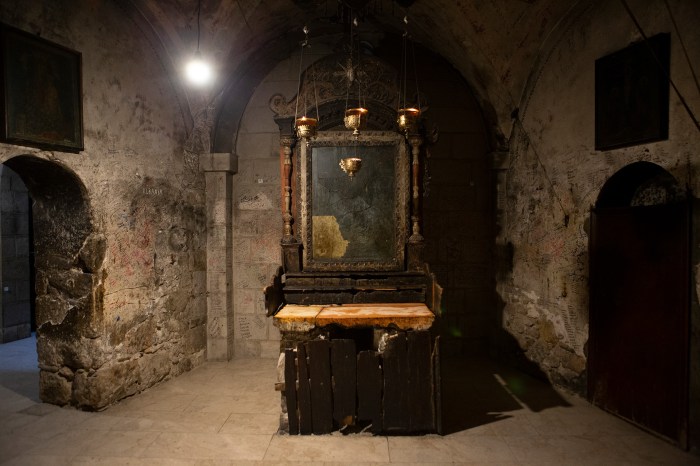Of the approximately 900 religiously affiliated colleges in the United States, over 200 maintain some sort of evangelical identity. In his memoir Academically Speaking: Lessons from a Life in Christian Higher Education, seasoned educator Rick Ostrander recounts his vocational journey while offering reflections on evangelical higher education. Nathan Finn, executive director of the Institute for Transformational Leadership at North Greenville University, spoke with Ostrander about the challenges and opportunities facing evangelical colleges.
You are still in the middle of your career in Christian higher education. Why write this memoir now?
I wanted to write about two topics. One is the world of Christian higher education, which I want both insiders and outsiders to better understand. The other is the importance of trusting God amid uncertainty. I have spent my entire adult life in Christian higher education, working in a variety of contexts. But there have also been some unexpected and even unwanted twists and turns. I’ve learned throughout that God is faithful and I can trust him.
Mark Noll published his seminal book The Scandal of the Evangelical Mind 30 years ago. What, in your view, is the current state of the evangelical mind?
There were two fronts Noll and others wanted to address. One was advancing Christian voices within the academy. We have seen progress in the number of Christian academics, including tenured professors in non-Christian institutions.
I see less progress, though, on the second front: cultivating an evangelical mind in local churches. Evangelicalism is marked by an inherent populism, which can work against scholarly voices. And political polarization seems to have magnified these anti-intellectual tendencies.
Another challenge for many Christian colleges is the need to focus on pragmatic matters like enrollment and budgets. Schools struggle to create the space for Christian scholars to pursue high-level thinking and scholarship.
In Christian higher education circles, one hears a great deal about integrating faith and learning. How would you explain this concept to someone outside these circles?
This phrase means different things to different academics. For me, it suggests an ideal of faculty integrating faith into their sense of vocation, their teaching, and their scholarship. When I attended Moody Bible Institute in the 1980s, there was an implied hierarchy that treated academia and other professions as less spiritual than full-time ministry work. But God calls some people to become academics who glorify him with excellent teaching and scholarship rooted in a Christian worldview.
Integration looks different depending on one’s discipline, but our beliefs should influence our teaching and scholarship. Integration also means helping students understand how their studies make a difference in the world.
What are some of the challenges and opportunities currently facing Christian higher education?
One challenge, at Christian schools and elsewhere, is what higher education experts call the upcoming demographic cliff. Declining birth rates eventually lead to shrinking applicant pools, which is the situation unfolding today. When schools struggle to attract students, they can also struggle to support the work of their faculty. Another set of challenges relates to cultural and political tensions in American society. Christians seem to be increasingly polarized, and some evangelical schools struggle to span the divide rather than simply reflect one constituency in the culture wars.
When it comes to opportunities, Christian institutions are ideally positioned to offer a deep level of community that students are looking for. Whether they are Christian or not, students want to be part of something bigger than themselves and to feel like they are really known by professors, staff, and other students. Cultivating a strong sense of community is profoundly Christian, besides making good business sense.
What advice do you have for graduate students who want to teach at a Christian college or university?
First, I would stress the importance of being realistic. It’s a tough job market, especially in the liberal arts, and finding full-time positions will only get harder. But if you feel that God is calling you to Christian higher education, then pursue that path. In the book, I recount how my own vocation has changed over time, from that of a professor to a host of other interesting roles. Remain open to other ways of using your graduate education, try not to look too far down the road, and trust that God will place you where he wants you to serve for each season of life.
What is the future of online education?
Online education will never equal undergraduate education in a residential setting. Too much is lost in terms of community. But online and hybrid courses offer greater flexibility to educate current students and reach new audiences, even at traditional institutions. Online courses can also help more students study abroad while still taking courses at their home institution.
Online programs will become an increasingly important source of revenue for schools, but they are not the financial gravy train that many would have forecasted 20 years ago. Still, they do provide other benefits. For example, I continue to work with Acadeum, a company that provides an online course-sharing consortium for independent colleges and universities. This is a creative way for schools to lower costs by accessing online courses from other schools with similar missions.
Why, in your view, should Christian schools emphasize study abroad programs?
I think these programs are crucial, but some worry that they can draw needed resources away from campus. One useful approach in financially challenging times is connecting study abroad opportunities with curricula that students are already committed to by virtue of their majors. Most study abroad programs are currently in the humanities, so another opportunity is creating similar pathways for the growing number of students majoring in STEM disciplines and professional fields. If our goal is producing well-educated Christian students for a global society, there is no substitute for giving them embodied cross-cultural experiences.
You recently became the founding director of the Michigan Christian Study Center. What role do these study centers play in Christian higher education?
I first became aware of this movement when I was working in Washington, DC, for the Council for Christian Colleges and Universities and was introduced to the Center for Christian Study at the University of Virginia. I appreciate how this model embeds many of the best features of Christian colleges within the nation’s leading research universities, with their considerable resources and cultural influence.
Christian study centers cultivate vibrant Christian learning communities that can nurture and support students and professors in pluralistic educational contexts. There will always be a place for private Christian colleges and universities like the ones where I’ve worked. But as a devoted Michigan alum, I’m excited to see this new form of Christian higher education planted there, and I hope something similar will take root at more institutions across the country.









































